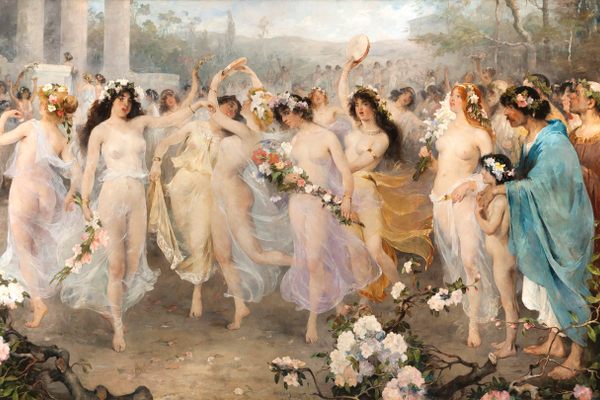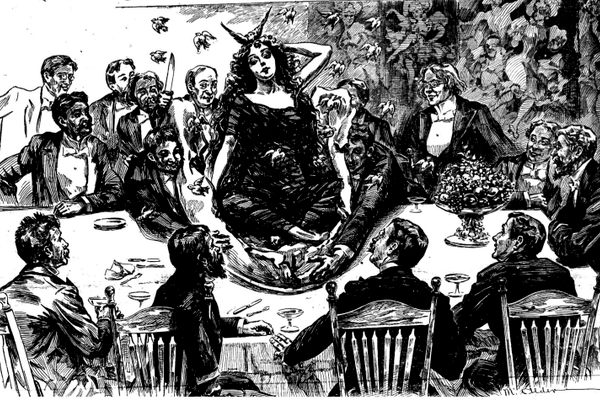The 17th-Century Nursery Rhyme About Kneading Bread With Your Butt Cheeks
If cockle bread existed, you wouldn’t want it anyway.

To a modern ear, cockle bread sounds… kind of funny. But as it turns out, the lore surrounding this bawdy baked good, which later morphed into a children’s nursery rhyme, was just as naughty in its day as it sounds today, just not for the reasons you might think.
The idea of cockle bread as a product of sexy baking stems almost entirely from the 17th-century writer John Aubrey’s Remaines of Gentilisme and Judaisme, a text from the 1680s that collected a number of folk customs. In his collection, Aubrey describes a sort of performance where young women would hike up their skirts and pretend to knead bread with their butt cheeks, singing:
My granny is sick, and now is dead,
And we’ll go mould some cockle bread.
Up with my heels and down with my head,
And this is the way to mould cockle bread.
According to Aubrey’s account, making cockle bread was “a wanton sport” for “young wenches.” As to whether any actual bread was ever made this way, Aubrey mentions that the custom was based on an older tradition wherein a young lover would actually knead dough with her butt and then bake it up and serve it to the one she pined for, like a magic spell.
Still, historical cockle bread is more of a concept than an actual food, as there doesn’t seem to be any concrete recipe for it. An early mention of “cockle-bread,” in the late 16th-century George Peele play The Old Wive’s Tale, does give some indication as to what it might have been, and how it got its funny name. In the romantic satire, a man’s head wearing ears of corn appears out of a well, while a voice flirts with a maiden, saying:
Comb me smooth, and stroke my head,
And thou shalt have some cockle-bread.
Before anyone tries to untangle the suffocating layers of sexual innuendo and historical context in this scene, in the notes of the 1996 edition of the play, editor Charles Whitworth pours some cold water over the passage with his reading. According to Whitworth, cockle bread was likely a type of peasant cornbread that was made with cockle weed, a toxic plant that can grow in corn fields. Any raunchy connotation in the reference isn’t elaborated on.
We contacted some food historians to find out what they know about cockle bread, but none of them had much to go on. “Sounds like fakelore to me,” says Ken Albala, a food historian at the University of the Pacific and author of the blog Ken Albala’s Food Rant. Although as the scholar Rachel Lauden, author of a blog about food and world history, says, “Bread and sexuality is absolutely everywhere once you start looking.”
References to cockle bread in the historical record go relatively quiet until a version of the verse reported by Aubrey pops up in the Victorian era as a nursery rhyme. By the time the cockle-bread rhyme reappeared in the 19th and 20th centuries, it seems to have lost its steamier subtext and ended up as a simple rhyming game for children.
So cockle bread as an actual food is essentially lost to history, if it ever existed at all. Considering that it’s bread someone made with their butt cheeks, maybe that’s for the best.
Gastro Obscura covers the world’s most wondrous food and drink.
Sign up for our regular newsletter.















Follow us on Twitter to get the latest on the world's hidden wonders.
Like us on Facebook to get the latest on the world's hidden wonders.
Follow us on Twitter Like us on Facebook